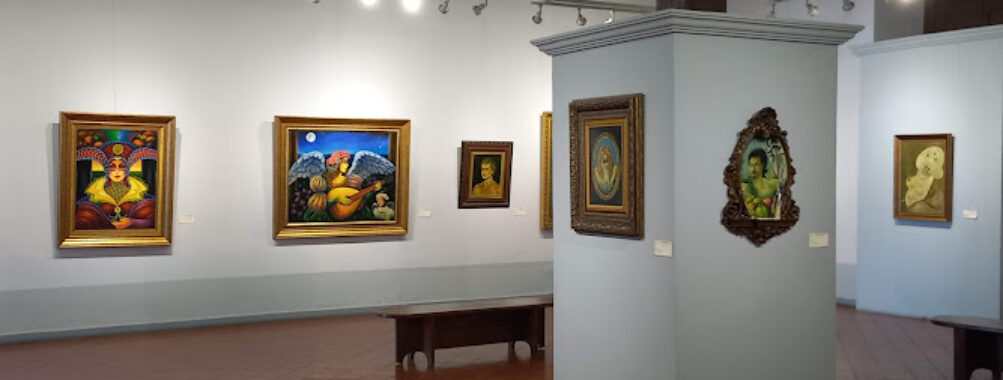
Galeria Nacional de Arte
“`html
Table of Contents
Description
The Galeria Nacional de Arte in Tegucigalpa stands as one of those places that quietly takes your breath away before you even realize it. It’s not flashy or overhyped, but it has this calm dignity that makes you slow down and really look. The building itself feels like a conversation between Honduras’ past and present — a space where colonial architecture meets the heartbeat of modern creativity. It’s the kind of gallery where you don’t just see art; you feel it telling stories about the country’s soul — its struggles, its beauty, its humor, and its resilience.
I remember walking through its halls one warm afternoon, the air thick with that faint scent of old wood and varnish, and thinking how much art can say without a single word. The collection ranges from pre-Columbian artifacts to contemporary works that challenge what it means to be Honduran today. Some pieces are bold and raw, others delicate and almost whispering. And that’s what makes this gallery special — it doesn’t try to impress you with grandeur, but instead invites you to connect.
Most visitors leave with a quiet sense of awe, though not everyone sees it the same way. Some find it smaller than expected or wish for more interactive exhibits, but that’s part of its charm — it’s intimate. You can actually take your time, stand in front of a painting, and let it sink in without being rushed by crowds. It’s a place for reflection as much as for discovery.
Key Features
- Houses an extensive collection of Honduran art, from indigenous artifacts to modern installations.
- Features rotating exhibitions highlighting local and regional artists.
- Wheelchair-accessible entrance for visitors with mobility needs.
- On-site restrooms available for guests.
- Family-friendly environment that welcomes children and school groups.
- Peaceful atmosphere ideal for art lovers seeking a quiet cultural escape.
- Knowledgeable staff who often share stories behind the artwork if you ask.
One thing I always tell people — don’t rush through it. The Galeria Nacional de Arte rewards curiosity. Peek into every corner, read the small plaques, and if you’re lucky, you might catch a local artist chatting about their work. There’s a sense of community here that you don’t always find in larger, more commercial museums.
Best Time to Visit
If you’re planning a visit, aim for the morning hours on weekdays. That’s when it’s quietest, and you can wander the galleries almost in solitude. The light filtering through the windows gives the artwork a gentle glow that makes everything look a bit more poetic. Avoid weekends if you prefer peace — that’s when families and school groups tend to come in.
The weather in Tegucigalpa can be warm year-round, but the gallery’s interior stays pleasantly cool. Visiting during the dry season (roughly November to April) makes it easier to explore nearby attractions afterward without worrying about sudden rain showers. And if you’re into photography, the soft afternoon light works wonders for capturing the building’s details and the surrounding streets.
How to Get There
Getting to the Galeria Nacional de Arte is pretty straightforward once you’re in Tegucigalpa. Most locals know it well, so even if your Spanish isn’t perfect, a quick “Galería Nacional de Arte?” to a taxi driver will get you there. If you’re staying downtown, it’s often within walking distance — though I’d say wear comfortable shoes because the streets can be uneven.
Public transportation is an option, but honestly, I’d recommend taking a taxi or rideshare for convenience and safety, especially if it’s your first time navigating the city. Parking nearby can be a bit tricky during busy hours, but there are usually attendants who’ll help guide you to a spot for a small tip.
Tips for Visiting
Here’s where a few insider tips can make your visit even better. First, bring cash — some small local galleries or nearby cafés might not accept cards. There’s no restaurant inside the gallery, but you’ll find plenty of places to eat just a short walk away. I once grabbed a plate of baleadas from a street vendor after my visit, and honestly, it was the perfect way to end the day.
If you’re traveling with kids, don’t worry — they’ll find plenty to enjoy. The gallery is surprisingly engaging for younger visitors, especially with its colorful art and occasional educational displays. Just remind them not to touch the exhibits (tempting as it might be).
Photography is usually allowed, but always check first — some temporary exhibits have restrictions. And if you’re an art lover like me, bring a small notebook. You’ll want to jot down the names of artists whose work speaks to you. I still have a scribbled note from my last visit about a painting that used coffee as pigment — something I’d never seen before.
Lastly, take your time. Don’t treat it like another checklist stop. Sit on one of the benches, absorb the atmosphere, and let the art tell you its stories. The Galeria Nacional de Arte isn’t just a gallery — it’s a window into Honduras’ creative heartbeat. Whether you’re an art aficionado or just a curious traveler, it’s a place that lingers with you long after you’ve left.
And maybe that’s the best part — you walk out not just having seen art, but having felt a little more connected to the place and its people. That’s what travel should be about, right? Not just ticking boxes, but finding those rare corners of the world that remind you why you started exploring in the first place.
“`
Location
Places to Stay Near Galeria Nacional de Arte
Find and Book a Tour
Explore More Travel Guides
No reviews found! Be the first to review!